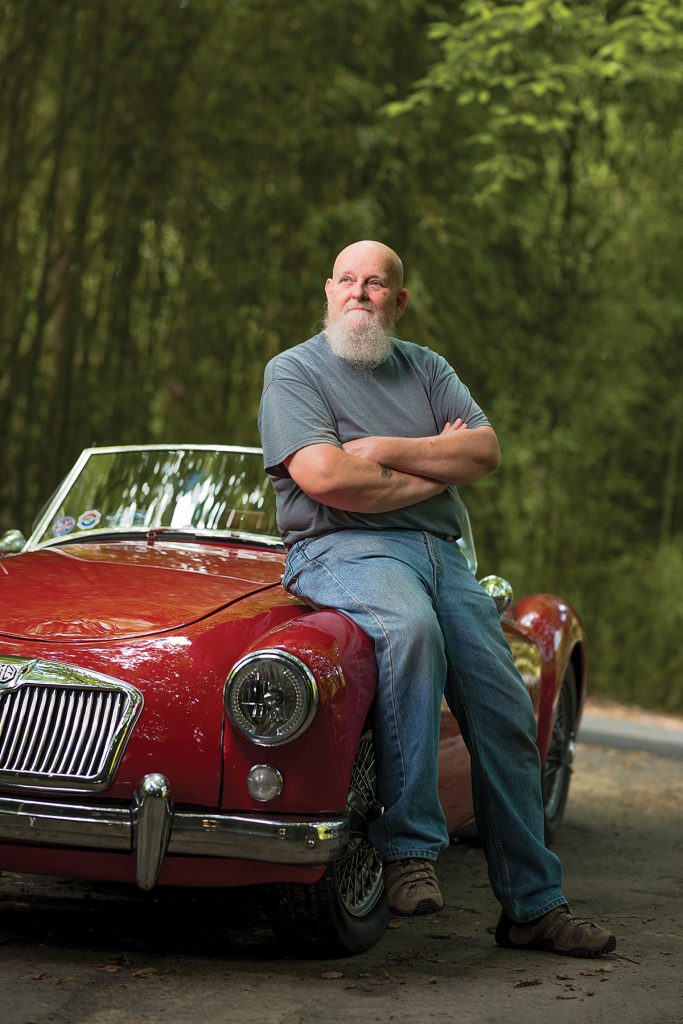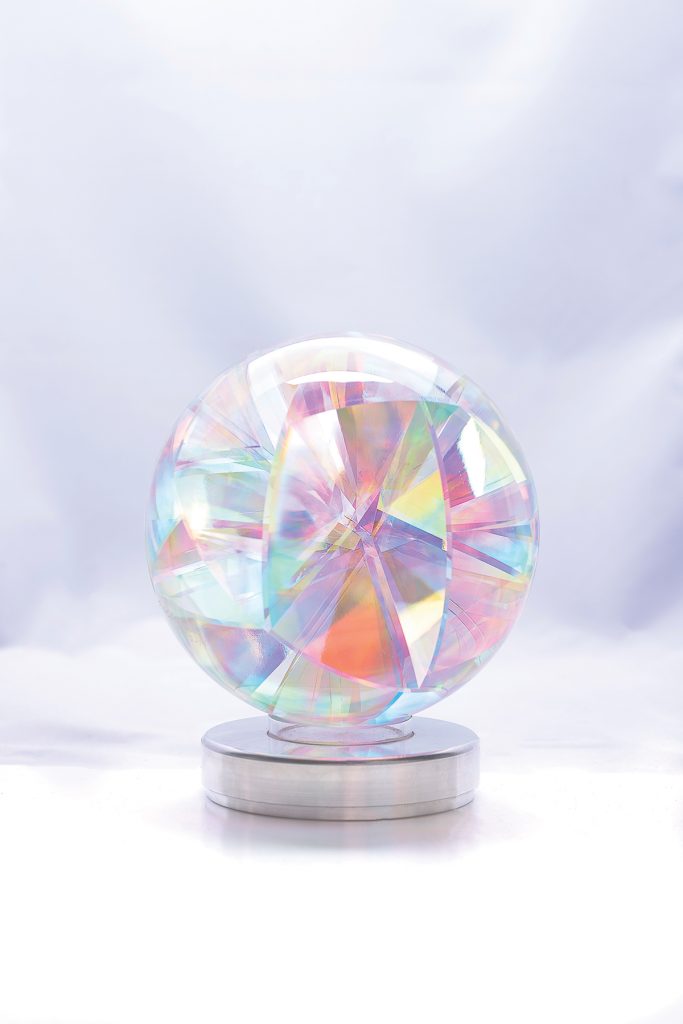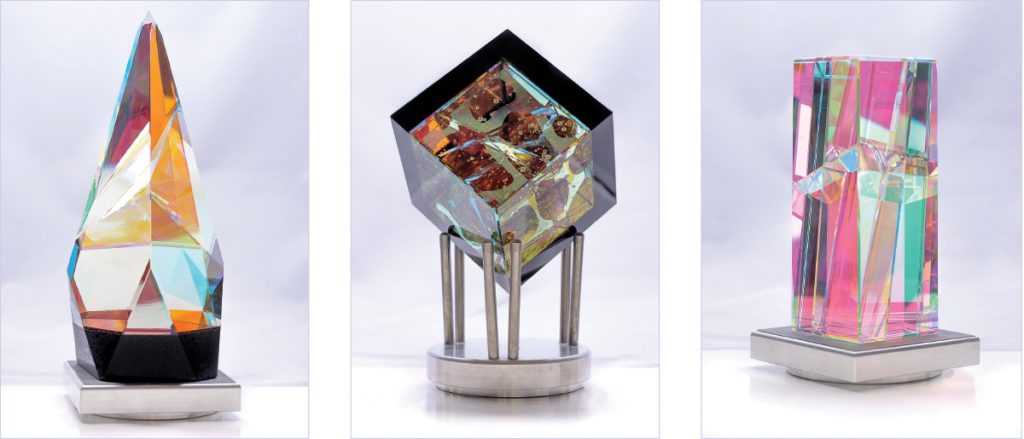He was studying ceramics at Florida Atlantic University when, on awhim, he bought a book on glassblowing. “It cost $18, which I really didn’t have to spare at the time,” says Robert Stephan. With the book as a guide, he began teaching himself the fundamentals of glassblowing. The text even led him through the process of making a glass furnace from an old 55-gallon steel drum.

Portrait by Clark Hodgin
He received his BFA with a focus on ceramics from FAU and got his MFA from Virginia Commonwealth University, where he majored in glassblowing. After graduation, he built a studio and began creating production pieces — vases, paperweights, “whatever I could make that was attractive enough to sell for gas money to keep the furnace hot.”
Explaining his transition away from clay, Stephan says, “Glass is a medium where I am not constrained like I was with ceramics. There’s an aspect of being able to work within the interior of glass, not [being limited to] surface design.”
It is exactly this talent — creating innovative designs inside glass that reflect and diffract light all across the rainbow spectrum — that has earned Stephan a national reputation. Michael Manes, gallery director of Asheville’s Blue Spiral 1, says, “[Bob] Stephan’s work is “magical and historically relevant within the context of the studio-glass movement.”

Photo by Clark Hodgin
Stephan describes his own forms as “generally simple and classic, such as designing within a sphere or cube shape.” Easy enough. But how does he get inside?
It’s all science. “I see myself as a frustrated engineer, which feeds my fascination with glass as an art medium.”
Stephan begins the process by melting a soda-lime glass formula in his furnace. Next, he blows (or shapes) the forms that will become elements in the sculptures. He then incorporates some optically coated sheet glass called “dichroic” that provides a range of colors. “It all sounds rather technical,” he admits, “and it is.”

Photos by Clark Hodgin
The construction phase involves a meticulous polishing of all the elements and bonding them with a museum-quality optical epoxy that must achieve heroic adhesive efforts without being visible in the finished product.
Even to the artist, the process is mysterious. At first, “the epoxy oozes all over the exterior,” obscuring the inner design, and at times, he says, “I can only envision the interior in my mind’s eye.”

Photo by Clark Hodgin
Other developments are clearer. Glass is a family business now: a dream surpassed. Stephan’s wife Peggy has collaborated with him on several designs, and he shares his studio with his daughter Elise, whom he is mentoring in the world of glass. “She is creating wonderful art [in] her own style,” he says. “This is a real joy of mine.”
Bob Stephan, North Asheville, studio visits by appointment (91 Webb Cove Road). Stephan’s work is on permanent exhibit at Blue Spiral 1 (38 Biltmore Ave., Asheville, bluespiral1.com). The artist and his daughter Elise Stephan will participate in the 3rd Annual Beaverdam Studio Tour happening Saturday, Oct. 26, 10am-5pm, and Sunday, Oct. 27, noon-5pm (beaverdamstudiotour.com). For more information, e-mail bob@hisglassworks.com or see hisglassart.com.